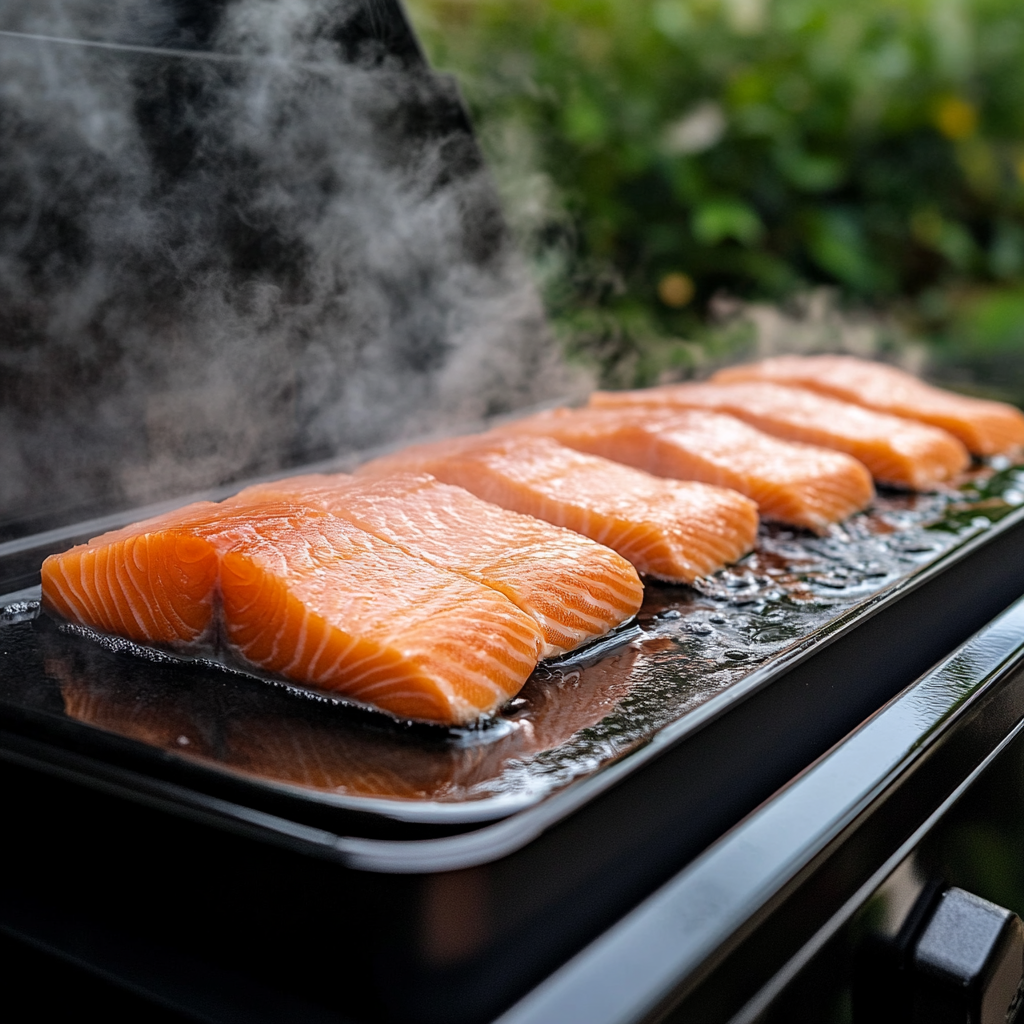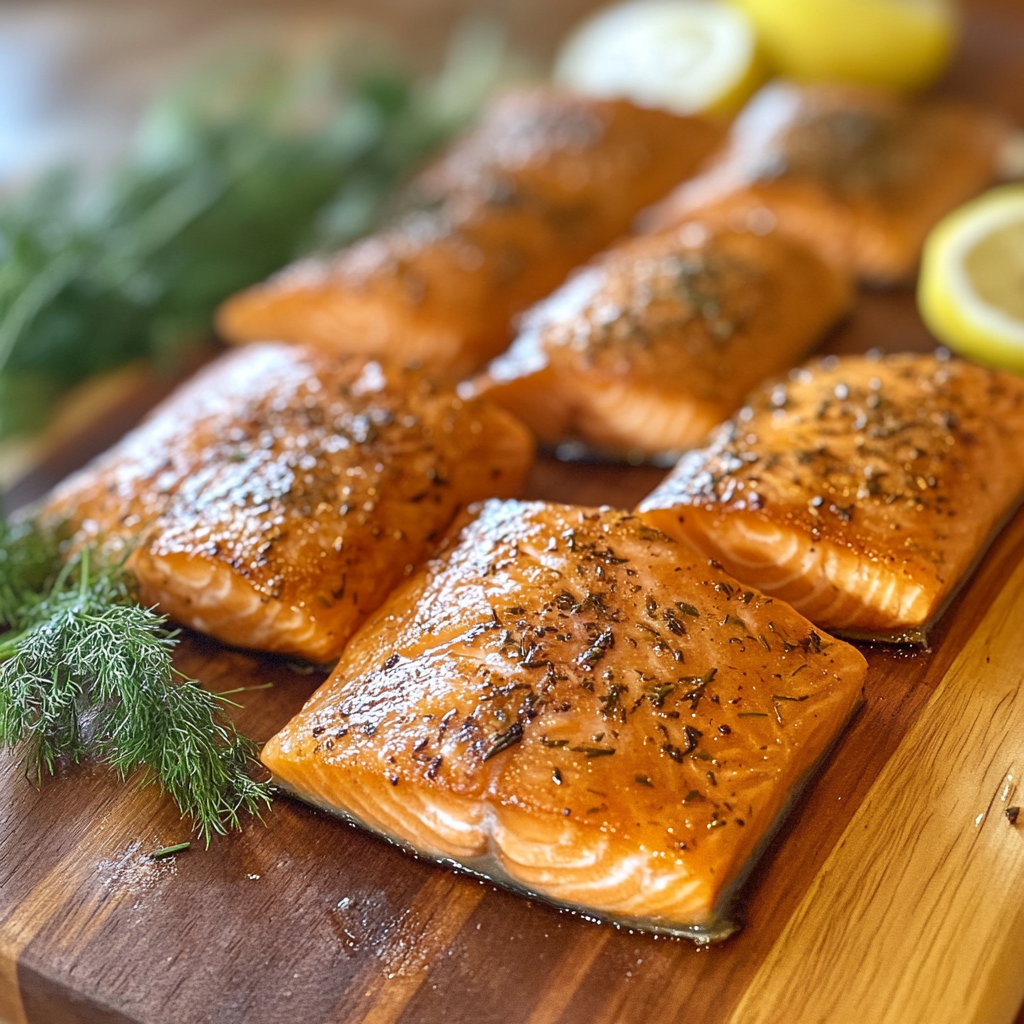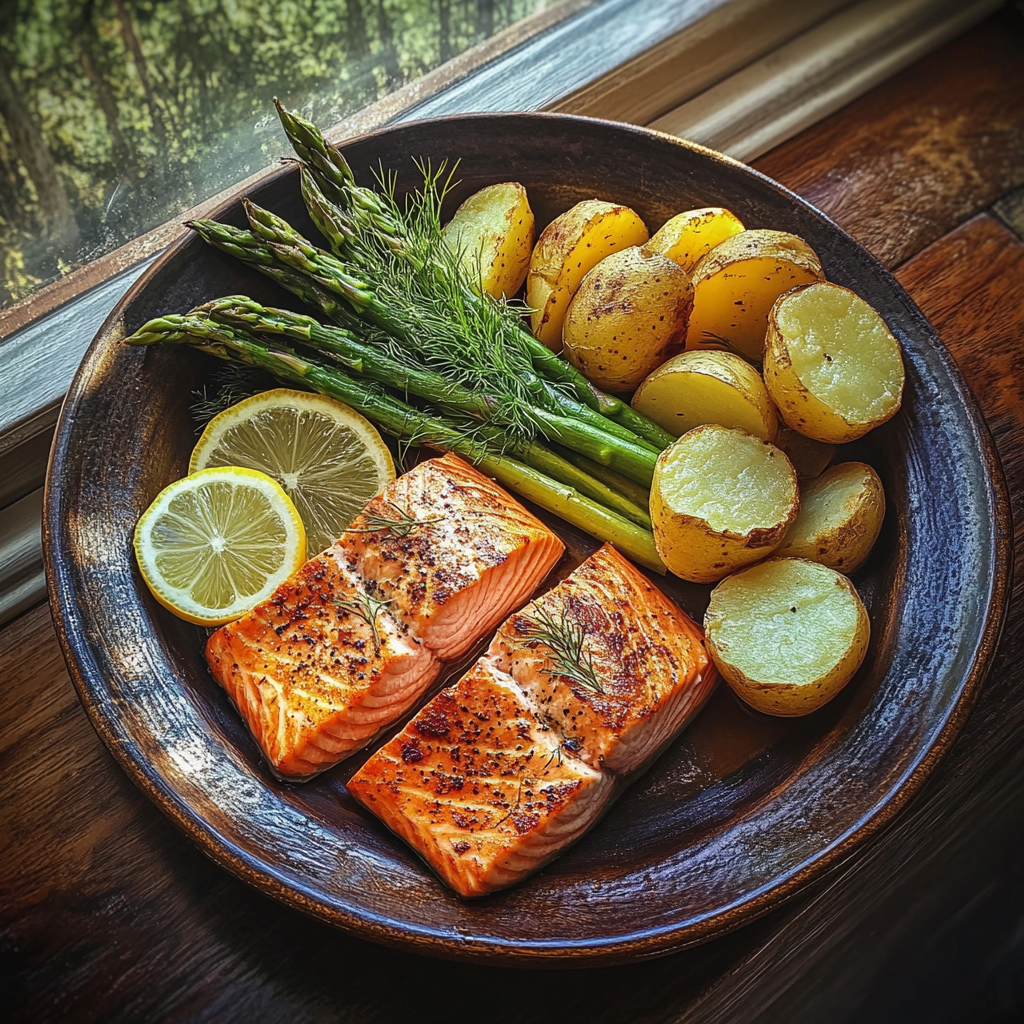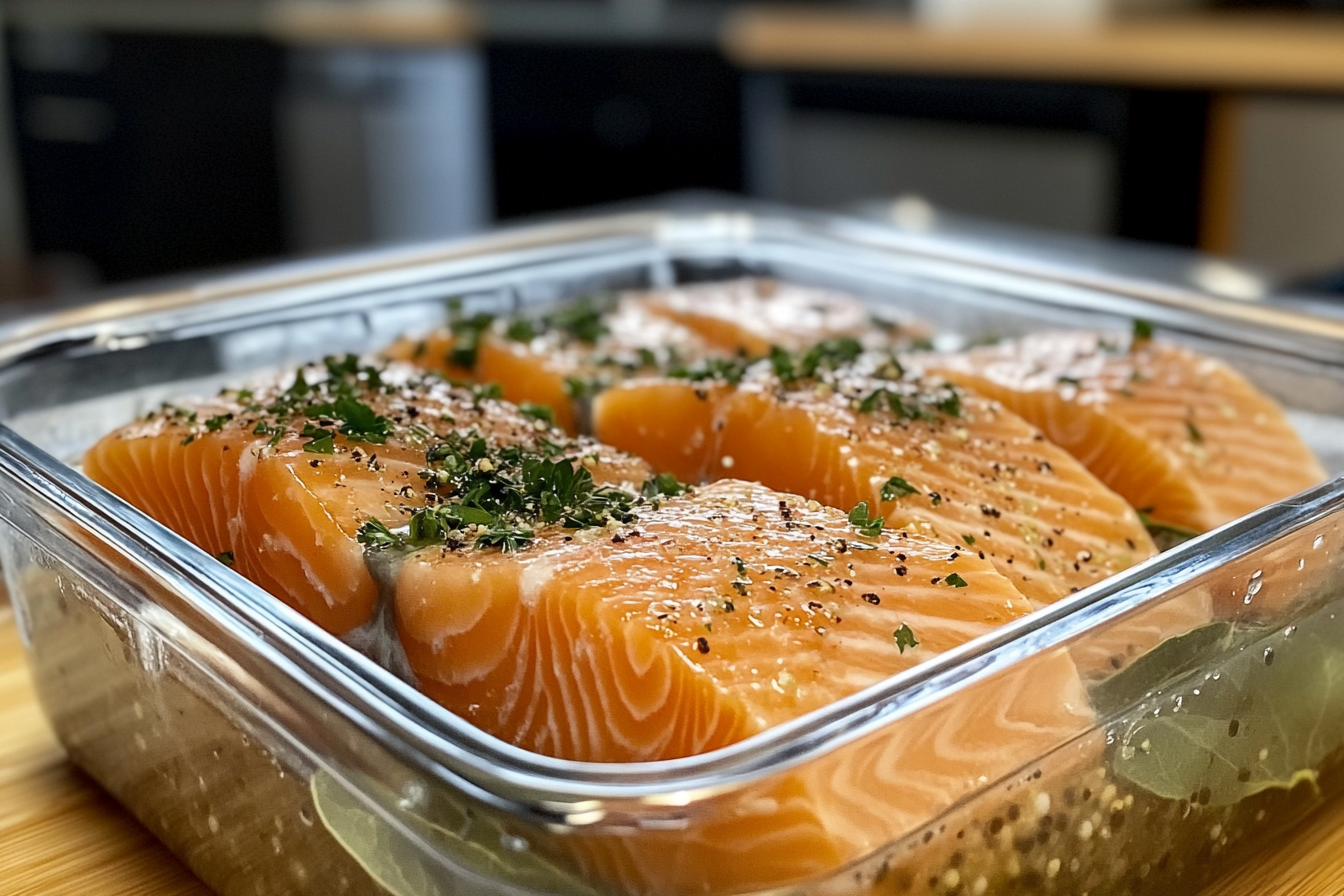Introduction
Smoking salmon is a culinary tradition cherished for its ability to infuse the fish with rich, smoky flavors while preserving its natural oils and tenderness. However, one of the most common challenges home cooks and grill masters face is understanding how to keep salmon moist when smoking. Without the right approach, it’s easy for the fish to dry out, resulting in a tough, chewy texture rather than the tender, succulent outcome you desire.
Whether you’re new to smoking or a seasoned expert, learning how to keep salmon moist when smoking is essential for perfecting this delicate process. Moisture retention not only enhances the texture but also ensures that the salmon absorbs the smoky flavor evenly, giving you a well-balanced and flavorful dish.
In this guide, we will cover effective techniques to prevent dry salmon when smoking, offering tips and strategies that ensure every bite of your smoked salmon remains moist, juicy, and full of flavor.
Why Moisture Matters in Smoked Salmon
Keeping salmon moist during smoking not only enhances the eating experience but also ensures that the fish retains its natural flavors and nutritional benefits. Moisture is crucial for both the texture and flavor of salmon. Dry salmon tends to be overly chewy, losing the beautiful, flaky texture that smoked salmon is known for.
Additionally, moisture helps the fish absorb the smoky flavor more effectively. When salmon remains moist throughout the smoking process, it creates a more harmonious balance between the smoky undertones and the rich taste of the fish. Without sufficient moisture, the fish may absorb too much smoke flavor, becoming bitter and unpalatable.
Step 1: Brining – The Key to Moisture Retention
Brining is one of the most effective ways to prevent your salmon from drying out during smoking. This technique involves soaking the fish in a salty water solution, which helps the salmon retain moisture as it smokes. Brining also enhances the natural flavor of the fish, giving it a more robust taste when it’s fully cooked.
Why Brining Works
Brining works on a cellular level. When fish is immersed in a saltwater solution, the process of osmosis draws water into the salmon’s cells, allowing them to retain more moisture during the smoking process. Additionally, brining helps to firm up the texture of the fish, preventing it from becoming too soft or falling apart while smoking.
Basic Brine Recipe
Here’s a simple brine recipe you can use to ensure your salmon stays moist during smoking:
- 4 cups of water
- ½ cup kosher salt
- ½ cup brown sugar (for sweetness and depth of flavor)
- 1 tablespoon of black peppercorns
- 2 cloves of garlic, crushed
- 1 bay leaf for an aromatic touch
Brining Instructions
- In a large bowl or container, mix the salt and sugar into the water until fully dissolved.
- Add the garlic, peppercorns, and bay leaf for additional flavor.
- Submerge the salmon fillets in the brine, ensuring they are fully covered.
- Cover the container and refrigerate the salmon for 4-8 hours. The longer you brine, the more moisture the fish will retain.
- After brining, rinse the salmon under cold water to remove excess salt, then pat it dry with paper towels before smoking.
For more details about brining, check out our full guide on Do You Have to Brine Salmon Before Smoking?.
Step 2: Maintaining the Perfect Smoking Temperature
Maintaining a consistent, low temperature while smoking is crucial to keeping salmon moist. Smoking salmon at too high a temperature can cause the fish to cook too quickly, leading to moisture loss. Instead, the “low and slow” method ensures that the salmon retains its natural juices while absorbing the smoky flavors.

Ideal Smoking Temperature for Salmon
- 150°F to 175°F (65°C to 80°C) is the perfect temperature range for smoking salmon. This allows the fish to cook slowly and absorb the flavors from the smoke without drying out.
If your smoker doesn’t have a built-in thermometer, it’s worth investing in one. Consistently checking the temperature of your smoker can help prevent overcooking and ensure that your salmon stays moist.
Water Pan for Extra Moisture
Another method for keeping the fish moist is using a water pan in your smoker. A water pan adds moisture to the smoking environment, which prevents the fish from drying out. As the water evaporates, it creates steam that keeps the salmon tender and juicy.
This technique is especially useful if you’re smoking salmon over a long period or in a dry environment. Simply fill a heatproof dish with water and place it inside the smoker alongside your salmon.
For more specific instructions on time and temperature control, check out our Smoked Salmon Recipe Guide.
Step 3: Choosing the Right Wood for Flavor and Moisture
The type of wood you choose for smoking salmon will influence not only the flavor of the fish but also its moisture content. Certain woods burn at higher temperatures, which can cause the salmon to cook too quickly and dry out. Other woods burn slower and produce a mild smoke that helps maintain the moisture of the fish.
Best Woods for Smoking Salmon
- Alder: A traditional favorite for smoking salmon, alder wood has a mild, slightly sweet flavor that complements the natural taste of the fish without overpowering it. This wood also burns slowly, helping to keep the salmon moist.
- Apple and Cherry: These fruitwoods are another great choice for salmon. They add a subtle sweetness and a light, fruity aroma that enhances the fish’s flavor. Both of these woods produce mild smoke that won’t dry out the salmon.
- Maple: A slightly stronger option than alder, maple wood imparts a sweet, rich flavor to the salmon. It’s a great choice if you enjoy a more pronounced smoky taste.
Avoid using strong woods like hickory or mesquite for salmon, as they can overpower the delicate flavor of the fish and lead to a bitter taste.
Step 4: Preparing the Salmon Before Smoking
There are a few essential steps to take when preparing your salmon for smoking that will help ensure it stays moist.
Coating the Salmon in Oil or Butter
Before placing the salmon in the smoker, lightly coat the fish with olive oil or melted butter. This simple step creates a protective barrier on the surface of the salmon, helping it retain moisture as it smokes. The fat from the oil or butter also adds richness to the flavor.
Seasoning Your Salmon
A well-seasoned salmon enhances the smoking process by locking in flavors and adding depth. Here’s a simple yet effective seasoning rub:
- 1 tablespoon of garlic powder
- 1 tablespoon of black pepper
- 1 tablespoon of paprika
- 1 teaspoon of dried thyme
- 1 teaspoon of dried oregano
After oiling the salmon, apply the rub evenly to ensure the seasoning penetrates the fish during the smoking process.
Step 5: Monitoring Internal Temperature for Moisture Retention
Overcooking is the primary cause of dry salmon. To prevent this, it’s essential to monitor the internal temperature of the fish as it smokes. A meat thermometer is an invaluable tool for this step, as it allows you to keep track of when the salmon has reached its optimal internal temperature.

Ideal Internal Temperature for Smoked Salmon
The salmon should be smoked until it reaches an internal temperature of 145°F (63°C). Once the salmon hits this temperature, remove it from the smoker immediately to prevent overcooking. Continuing to cook the fish beyond this point will result in moisture loss, which leads to dry and chewy salmon.
If you’re unsure about cooking times, explore our detailed guide on How Long to Smoke Salmon.
Step 6: Letting the Salmon Rest
Once your salmon has finished smoking, it’s important to let it rest before serving. Allowing the salmon to rest for 5-10 minutes after smoking helps the juices redistribute throughout the fish, ensuring every bite is tender and moist.
Why Resting Matters
Resting is a crucial step in keeping salmon moist. If you cut into the salmon immediately after smoking, the juices will escape, leaving the fish dry. By letting it rest, you allow the moisture to settle evenly throughout the salmon, resulting in a juicier and more flavorful dish.
Smoking Methods for Moisture Retention
While traditional hot smoking is the most popular method for smoking salmon, there are a few variations you can explore to retain even more moisture:
Cold Smoking
Cold smoking involves exposing the salmon to smoke without cooking it. This method is typically used for making lox or other types of cured salmon. Cold smoking occurs at a temperature below 85°F (29°C), allowing the salmon to absorb smoke flavor without losing moisture.
Hot Smoking
Hot smoking, the method we’ve been discussing, involves both smoking and cooking the salmon simultaneously. The key to retaining moisture with this method is to keep the temperature low and steady, as outlined earlier in this article.
Pairing Suggestions for Smoked Salmon
Smoked salmon is a versatile dish that pairs well with a variety of sides and drinks. Here are some suggestions to complement your perfectly smoked salmon:
- Lemon and Dill: The bright citrus notes of lemon and the aromatic flavor of fresh dill are classic accompaniments to smoked salmon.
- Crisp White Wine: A light, crisp white wine, such as Sauvignon Blanc, pairs beautifully with the richness of smoked salmon.
- Salads and Vegetables: Serve smoked salmon with a fresh green salad or steamed asparagus to create a balanced meal.

Health Benefits of Smoked Salmon
Salmon is widely recognized for its health benefits, and smoking the fish doesn’t diminish these. In fact, smoked salmon retains many of its valuable nutrients, making it a delicious and nutritious option for meals.
Rich in Omega-3 Fatty Acids
Smoked salmon is an excellent source of omega-3 fatty acids, which are essential for heart health, brain function, and reducing inflammation. These healthy fats help to lower blood pressure and improve cholesterol levels.
High in Protein
In addition to being rich in healthy fats, salmon is also a great source of high-quality protein. Each serving of smoked salmon provides a substantial amount of protein, which is vital for muscle repair and growth.
Packed with Vitamins
Smoked salmon is rich in vitamins such as Vitamin D, Vitamin B12, and Selenium, which support bone health, immune function, and energy production.
Conclusion
Mastering the art of smoking salmon while keeping it moist is a rewarding culinary skill. By brining the salmon, controlling the temperature, selecting the right wood, and monitoring internal temperatures, you can enjoy tender, flavorful smoked salmon every time. Remember, patience and attention to detail are key to achieving that perfect balance of moisture and smoky flavor.
Whether you’re experimenting with cold or hot smoking, don’t forget to pair your smoked salmon with fresh herbs, citrus, and a crisp white wine for a truly memorable meal.
If you’re looking for more smoked salmon recipes or want to try different preparation methods, check out our King Salmon Recipe or explore How to Cook Salmon from the Deli for more inspiration.

